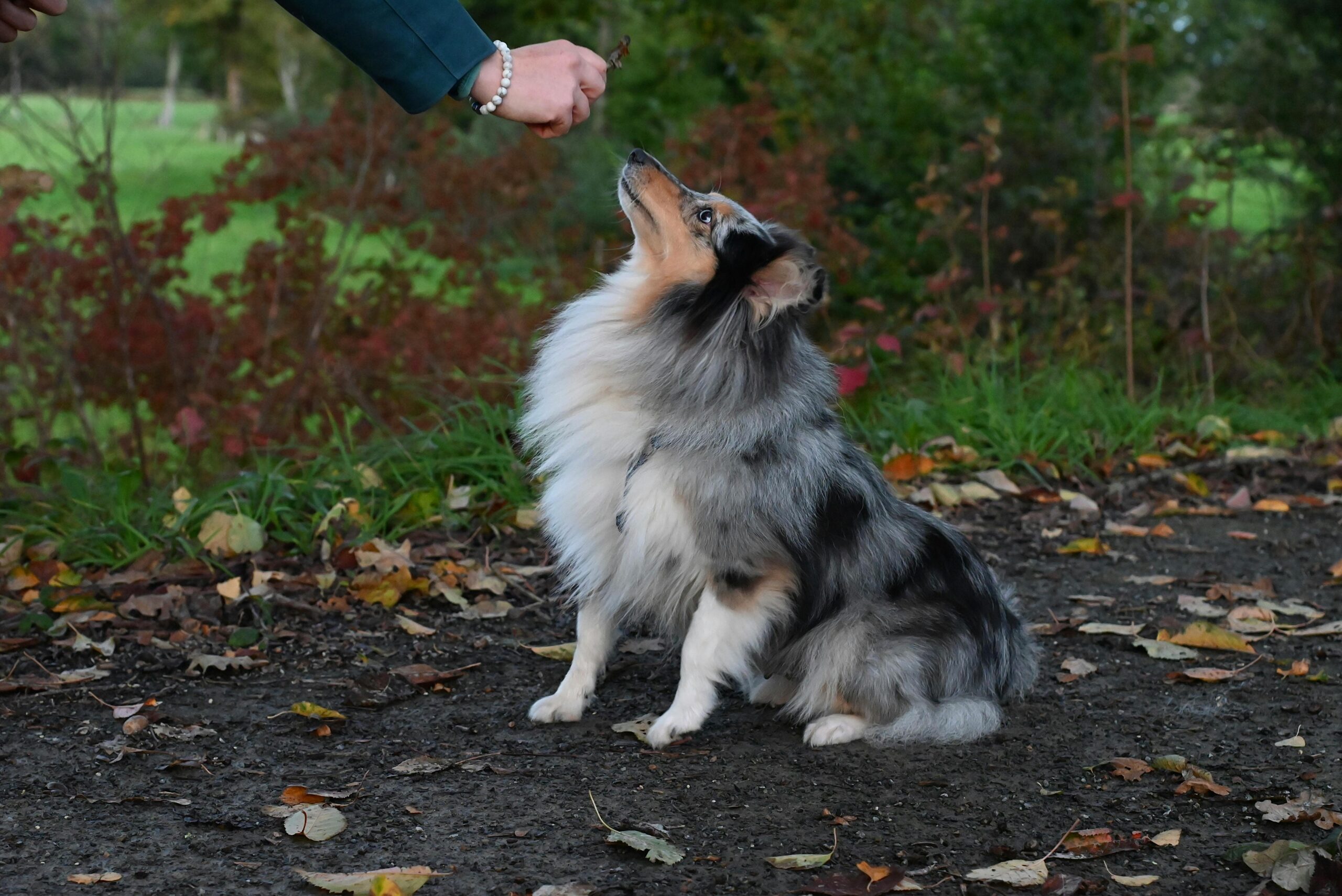Your cart is currently empty!

The Benefits of Positive Reinforcement in Dog Training
Posted by:
|
On:
|
Training your dog can be one of the most rewarding aspects of pet ownership. But with so many different training methods out there, it’s important to choose an approach that fosters a positive and trusting relationship between you and your dog. That’s where positive reinforcement comes in.

What Is Positive Reinforcement?
Positive reinforcement is a reward-based training method that encourages good behavior by offering your dog something they love—whether it’s a treat, praise, or playtime—when they perform the desired behavior. Instead of focusing on punishing bad behavior, positive reinforcement motivates dogs to repeat behaviors that are rewarded. This approach not only teaches them what you want but makes learning fun and enjoyable.
Here are some key benefits of using positive reinforcement in dog training:
1. Builds Trust and Strengthens Your Bond
Training isn’t just about teaching commands; it’s about building a trusting relationship with your dog. Positive reinforcement focuses on rewarding good behavior rather than correcting bad behavior, which helps your dog associate training with positive experiences. As a result, your dog will feel more confident, and your bond will grow stronger.
2. Increases Motivation and Enthusiasm
Dogs love to be rewarded, whether it’s with treats, toys, or affection. Positive reinforcement creates an environment where your dog is excited to learn and eager to please because they know good things happen when they succeed. This high level of motivation leads to faster learning and more reliable behavior over time.
3. Reduces Stress and Anxiety
Traditional training methods that rely on punishment or correction can increase a dog’s stress and anxiety, leading to fear or reluctance to engage in training. Positive reinforcement eliminates this fear by creating a stress-free, encouraging environment. Dogs trained with positive methods are more relaxed, happy, and willing to participate.
4. Encourages Long-Term Behavioral Changes
Positive reinforcement not only teaches dogs specific commands but also encourages them to think and make good choices on their own. Because the focus is on rewarding desirable behaviors, dogs learn to repeat those actions without relying on cues. This leads to long-lasting behavioral changes that persist even when treats or rewards are gradually phased out.
5. Suitable for All Dogs and Training Goals
One of the greatest advantages of positive reinforcement is its versatility. This method works for dogs of all ages, breeds, and temperaments. Whether you’re training a puppy, teaching advanced tricks, or working on specific behavioral issues, positive reinforcement can be tailored to suit your dog’s unique needs and personality.
6. Reinforces a Positive Learning Environment
Learning should be enjoyable—for both you and your dog. Positive reinforcement training creates a fun, engaging environment where your dog can thrive without fear of making mistakes. This encourages a lifelong love of learning and fosters a harmonious relationship where communication is clear and mutually rewarding.
Positive reinforcement is not only an effective training method but also one that prioritizes your dog’s well-being and emotional health. By focusing on rewards, it builds confidence, reduces stress, and creates a lasting bond between you and your dog. Whether you’re working on basic obedience or advanced skills, positive reinforcement is the key to creating a happy, well-mannered companion.
Start incorporating positive reinforcement into your training routine today—and watch your dog flourish!

